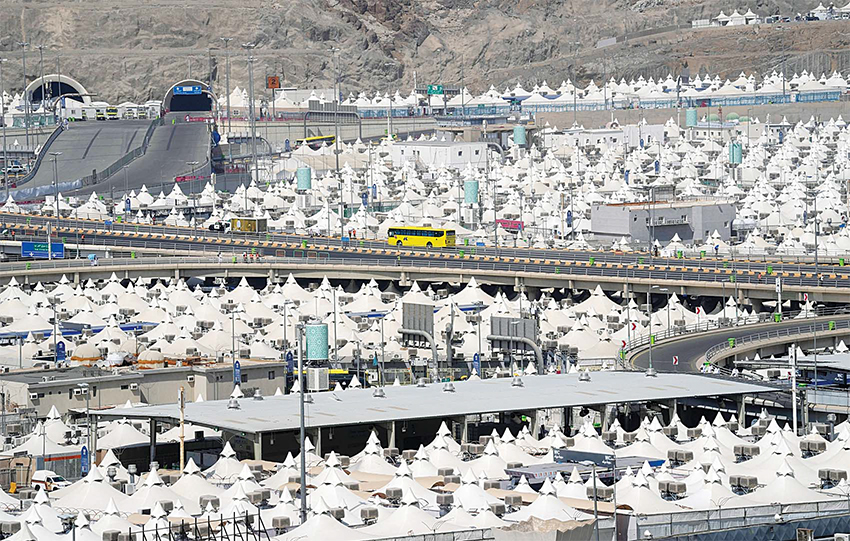07/07/2022
07/07/2022
MAKKAH, July 7, (Agencies): It is a scene that stirs hope — and relief — for Muslims around the world. One million pilgrims from across the globe amassed on Thursday in the holy city of Makkah in Saudi Arabia to perform the initial rites of the Hajj, marking the largest Islamic pilgrimage since the coronavirus pandemic upended the annual event — a key pillar of Islam. The pilgrims later flocked to Mina holy site to spend the day of Tarwiyah (water provision) as part of the main rituals of the religious journey of Hajj. Going to Mina and spending a day there comes in the context of the confirmed practices of the Prophet Muhammad (PBUH), the kingdom’s state-owned news agency, SPA, reported.

Pilgrims are supposed to throng the mountain of Arafa, where they must remain from sunrise to sunset, in the most significant ritual of pilgrimage, it added. The Hajj is a once-in-a-lifetime duty for all Muslims physically and financially able to make the journey, which takes the faithful along a path traversed by the Prophet Muhammad (PBUH) some 1,400 years ago. Pilgrims spend five days carrying out a set of rituals intended to bring them closer to God. That includes praying around the cube-shaped Ka’aba, the holiest shrine in Islam. At the center of the Grand Mosque’s courtyard on Thursday, thousands of unmasked pilgrims circled the Ka’aba. The crowds, visibly thinner than usual, moved counter-clockwise around the granite building in a blur, their hearts tilting toward the structure meant to symbolize the oneness of God in Islam.
Wherever they are in the world, observant Muslims face the Ka’aba to pray daily. Pilgrims appeared to throw COVID-19 caution to the wind as they thronged the Grand Mosque — in sharp contrast to the social distancing and mask requirements of the past two years. This time, there were signs of lingering vigilance.
Typically, worshippers would fight the crowds for a chance to touch and kiss the black stone on the Ka’aba’s eastern corner, but the government has banned this practice. Saudi authorities also distributed bottles of water from the holy Zamzam well instead of allowing pilgrims to drink from cups at the mosque. Thousands of medical workers were on hand to assist those in need. This year, the Hajj is open to just 1 million foreign and domestic pilgrims who have been fully vaccinated against the coronavirus, tested negative for COVID- 19 and are between 18 and 65 years old.
Authorities estimate 85% have arrived from abroad. While this year’s attendance is far below the pre-pandemic influx of 2.5 million pilgrims, it represents a significant step closer to normal after the kingdom restricted the event to a small number of Muslim residents for the past two years. The ritual was almost scrapped in its entirety in 2020, when as few as 1,000 residents were permitted to take part.
Some 60,000 residents attended last year. The unprecedented restrictions sent shockwaves through the Muslim world and devastated many believers, who often save up and wait for years to make the pilgrimage. Although no longer in the shadow of the pandemic, this Hajj is taking place amid Russia’s war on Ukraine — a conflict that may be thousands of miles from the homes of many Muslims but has sent the prices of staple foods soaring and spread misery across the world. This year’s Hajj also showcases de facto ruler Crown Prince Mohammed bin Salman’s latest efforts to loosen social restrictions and transform the kingdom. Saudi Arabia officially began allowing women to perform the Hajj without a male guardian, or “mahram,” last year.


